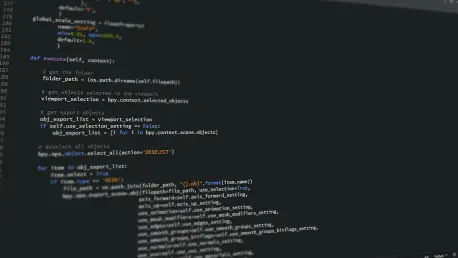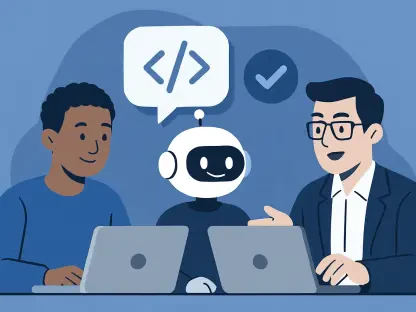In today’s digital age, JavaScript remains a cornerstone of web development; however, it poses significant security risks due to certain vulnerabilities. A recent study has highlighted a severe, widespread flaw in JavaScript code that affects numerous open-source projects on GitHub. This vulnerability, known as CWE-22, involves path traversal attacks that allow unauthorized access to files outside specified directories. Such breaches seriously compromise system confidentiality, integrity, and availability, posing a significant threat to web applications. The fundamental issue centers around a specific code pattern, particularly the path.join() function used in Node.js. When poorly validated user inputs are processed, they lead to directory traversal sequences that hackers can exploit. This glaring vulnerability underscores the critical need for developers to adopt rigorous input validation and improve their understanding of potential security implications.
The propagation of this vulnerability points to a deep-rooted problem in coding habits and a lack of security knowledge among developers. Alarmingly, research has identified as many as 1,756 instances of this specific vulnerability across various projects on GitHub, ranging from small-scale applications to large platforms. Such extensive propagation suggests a significant gap in security awareness within the development community, a gap that has persisted for over a decade. Since its inception on developer platforms, the vulnerable code pattern has been repeatedly used without adequate scrutiny or improvement. This oversight necessitates a comprehensive approach to educating developers about secure coding practices and the importance of rigorous input validation and path handling.
The Role of AI in Propagating and Addressing Vulnerabilities
As developers increasingly turn to AI models for coding assistance, a new layer of complexity surfaces in addressing JavaScript security flaws. Prominent Large Language Models (LLMs) like GPT-3.5, GPT-4, Copilot, Claude, and Gemini were intended to be aids, presenting secure coding solutions. However, these AI models unintentionally perpetuate security vulnerabilities by generating insecure code patterns. An astonishing 70% of code samples generated by these LLMs were found to harbor vulnerabilities, mirroring the problematic practices they have learned from. This replication of historically insecure code patterns highlights a major issue: the AI models’ learning processes must be refined to avoid disseminating outdated or insecure practices.
The influence of AI in perpetuating such vulnerabilities cannot be overlooked. While AI holds the promise of enhancing productivity and providing insightful assistance in coding, the underlying data it learns from must be secure and reliable. This situation underscores the necessity for careful oversight and the need for AI training datasets that prioritize security and quality assurance. Additionally, it calls for a collaborative effort between AI developers and cybersecurity experts to refine AI algorithms and ensure AI tools assist in promoting safe coding practices rather than hindering them. Addressing these issues head-on can help prevent the escalation of security vulnerabilities, ensuring that AI remains an asset rather than a liability in the software development process.
Solutions and Future Prospects for Enhanced Security
Efforts to patch these daunting vulnerabilities have yielded mixed results. Researchers developed automated systems that effectively generated fixes for most of the identified vulnerabilities in JavaScript projects. Despite this promising development, the real-world application of these patches remains disappointingly low, with only a handful of projects implementing them post-disclosure. This reluctance or oversight in applying patches reveals a significant challenge in managing vulnerabilities within open-source ecosystems at scale. Given the pace and breadth of software development, maintaining comprehensive security protocols becomes a daunting task. This challenge underscores an urgent need for enhanced security consciousness, as well as automated tools capable of quickly and efficiently addressing such vulnerabilities.
Ultimately, this study paints a multifaceted picture of how entrenched coding habits, coupled with technological advancements, have led to the proliferation of security vulnerabilities. To counteract these issues, it is essential to promote security education and foster a culture of safe coding practices among developers. The development of automated tools that can swiftly identify and correct vulnerabilities is equally critical. By integrating these elements—improved security education, proactive vulnerability management, and advanced AI algorithms—developers can create a more secure and reliable software development environment. Adopting these solutions ensures that future developments in web applications are not only innovative but also resilient against malicious exploitation.
Looking Ahead in Secure Coding Practices
In today’s digital landscape, JavaScript remains integral to web development, but it presents notable security risks due to inherent vulnerabilities. A recent study uncovered a significant flaw affecting countless open-source projects on GitHub, identified as CWE-22. This vulnerability enables path traversal attacks that grant unauthorized file access beyond set directories, undermining system security and posing serious threats to web applications. The issue is mainly attributed to a specific code pattern, notably the path.join() function in Node.js, which can be exploited when user inputs aren’t properly validated. The profound risk highlights the necessity for developers to enforce strict input validation and enhance their understanding of security implications. Alarmingly, there has been documentation of 1,756 instances of the vulnerability across various GitHub projects, signaling widespread ignorance of secure coding practices. The longstanding use of the compromised code pattern without evaluation underscores the urgent need to educate developers on rigorous validation and secure coding techniques.









